Getting more subscribers on YouTube is key if you want to grow your audience and access the platform’s monetization features.
Why?
Because hitting 1,000 subscribers is one of the criteria to become a YouTube Partner and start earning money from running ads on your channel.
In this article, we’ll show you how to get more subscribers on YouTube (for free) and build an engaged audience that drives growth and revenue.
1. Optimize Your YouTube Channel
How you set your YouTube channel up can impact how many users click the subscribe button.
For example, if your YouTube channel looks unprofessional, this might damage your credibility. Which makes it harder to get subscribers.
Follow these three steps to ensure your channel is optimized for growth:
Write a Compelling Channel Description
A channel description is an opportunity to sell your channel and its content to potential subscribers.
A well-crafted description tells your audience:
- What your channel is about
- The types of videos they’re likely to see
- Who the channel is for
- The benefit a subscriber will get from your channel
Here’s the description on the Semrush YouTube channel:
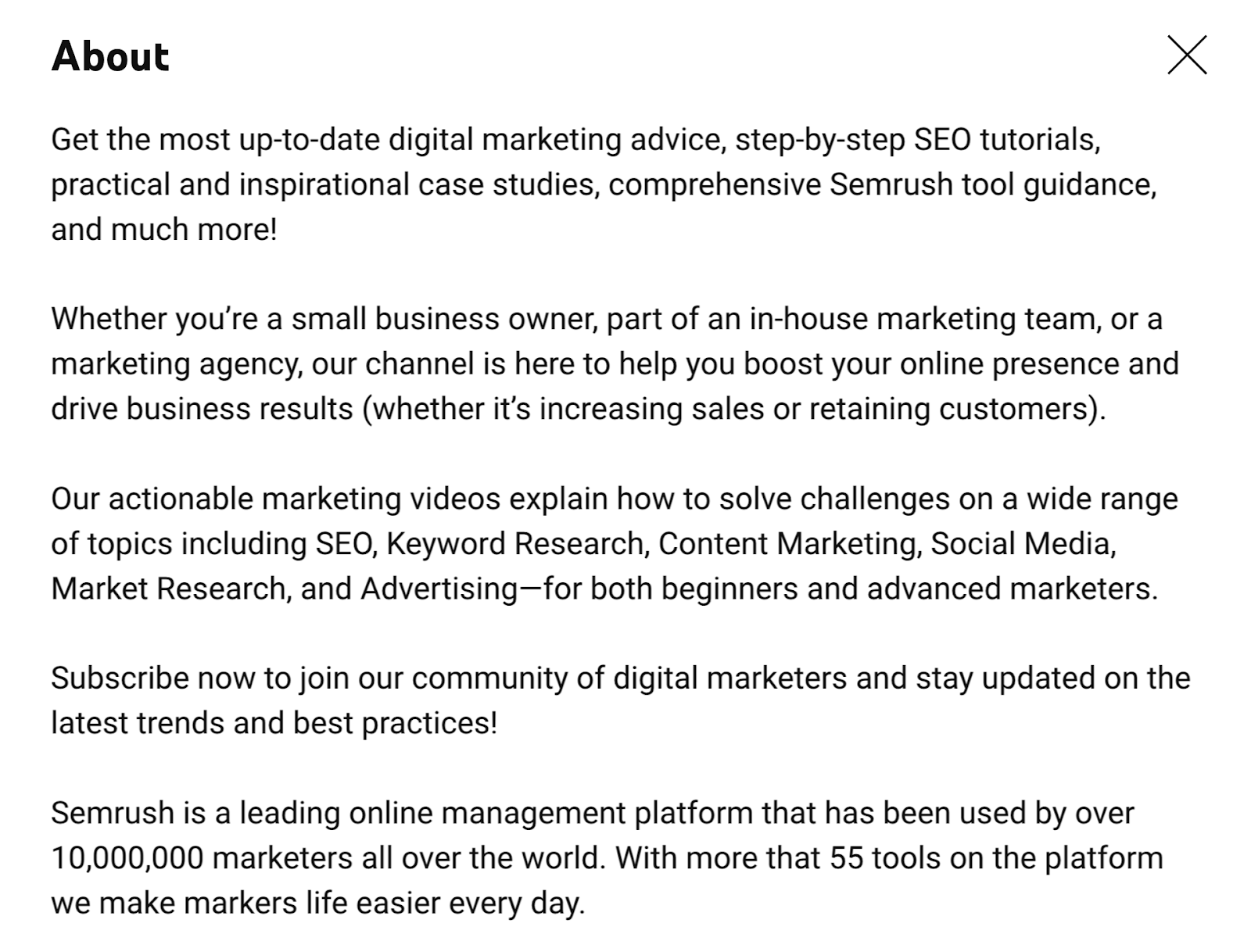
Here are some key things to note about this channel description:
- It shares specific information on the channel topic (up-to-**** digital marketing advice)
- It includes the type of YouTube content the channel focuses on (step-by-step tutorials, practical case studies, and tool guidance)
- It states who the channel is aimed toward (small business owners, in-house marketing teams, and agencies) with different knowledge levels
- It tells the audience how the channel helps them (boost online presence and drive business results)
Notice how we’ve included a call to action (CTA) that encourages people to subscribe?
When writing your channel description, include the most important information in the first sentence.
Why?
Because the first 100-150 characters or so will show up next to your channel name in YouTube search results. And a well-crafted opening sentence can help inspire clicks that could turn into subscribers.

Don’t forget to include keywords that users search for in your channel description.
This can help your channel become more visible in YouTube search results and lead to you getting more subscribers.
Target keywords related to your business, industry, or niche.
For example, if you run a pizza parlor and want to create a cooking channel for YouTube, suitable keywords might include “homemade pizza dough” or “pizza crust recipe.”
Use a tool like Semrush’s Keyword Analytics for YouTube to identify relevant keywords to target.
For example, you can explore:
- Top keywords: Most popular keywords for a chosen period and country
- Fast-growing keywords: The keywords with the most searches for a current period compared to a previous period
- Most-viewed videos: Most popular videos for a chosen period and country
Head over to the tool, then click “Get started” under “Keywords Research.”
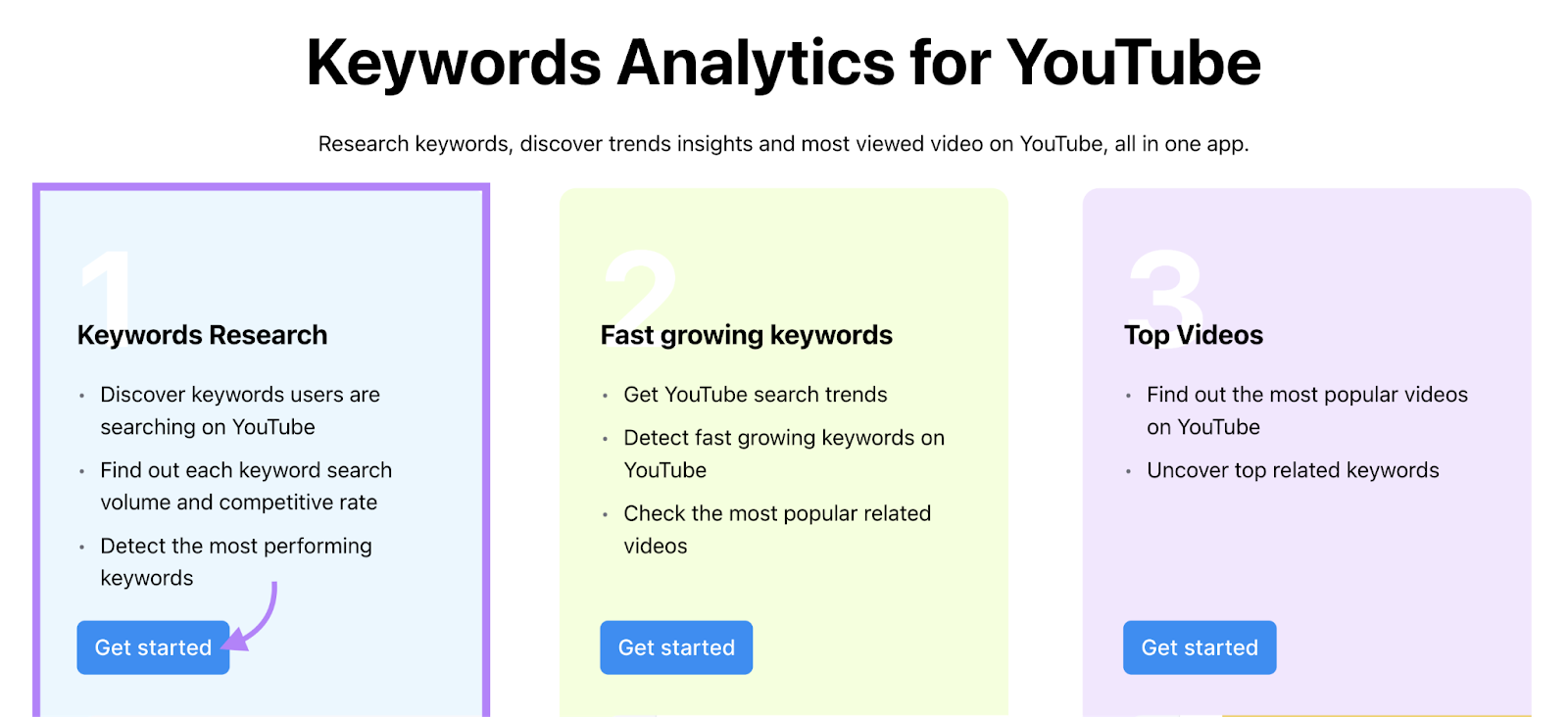
Search for a keyword related to your channel, industry, or niche (e.g., “pizza”).
And select your country in the top right, if needed. Then click “Search.”
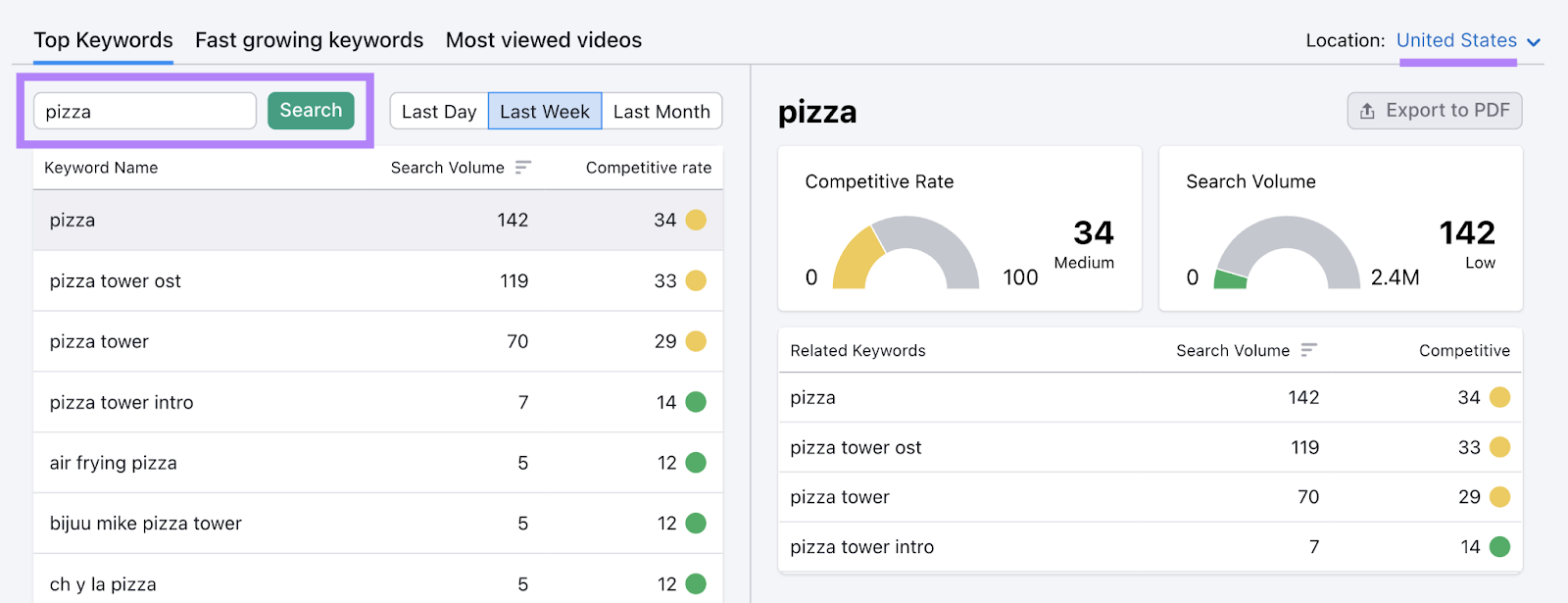
The tool will show you related YouTube search terms in the table.
Along with their “Search Volume” and “Competitive rate.” These metrics tell you how many searches a keyword gets and how competitive it is to rank for the term on YouTube, respectively.
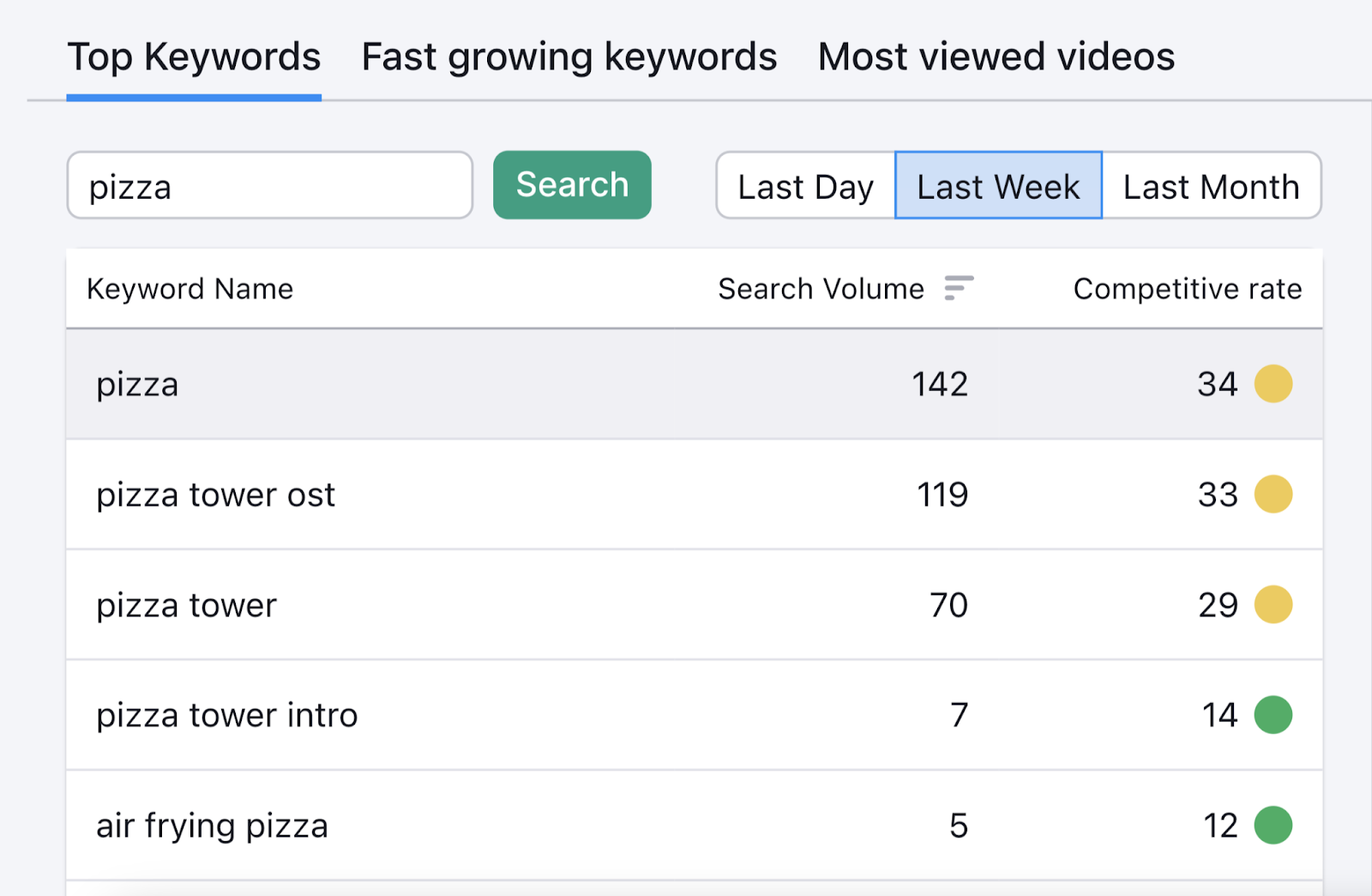
Ideally, you want to target terms with a high search volume and low competition. Because they’ll help drive the most traffic to your channel.
To look at trending topics, switch to the “Fast growing keywords” tab.
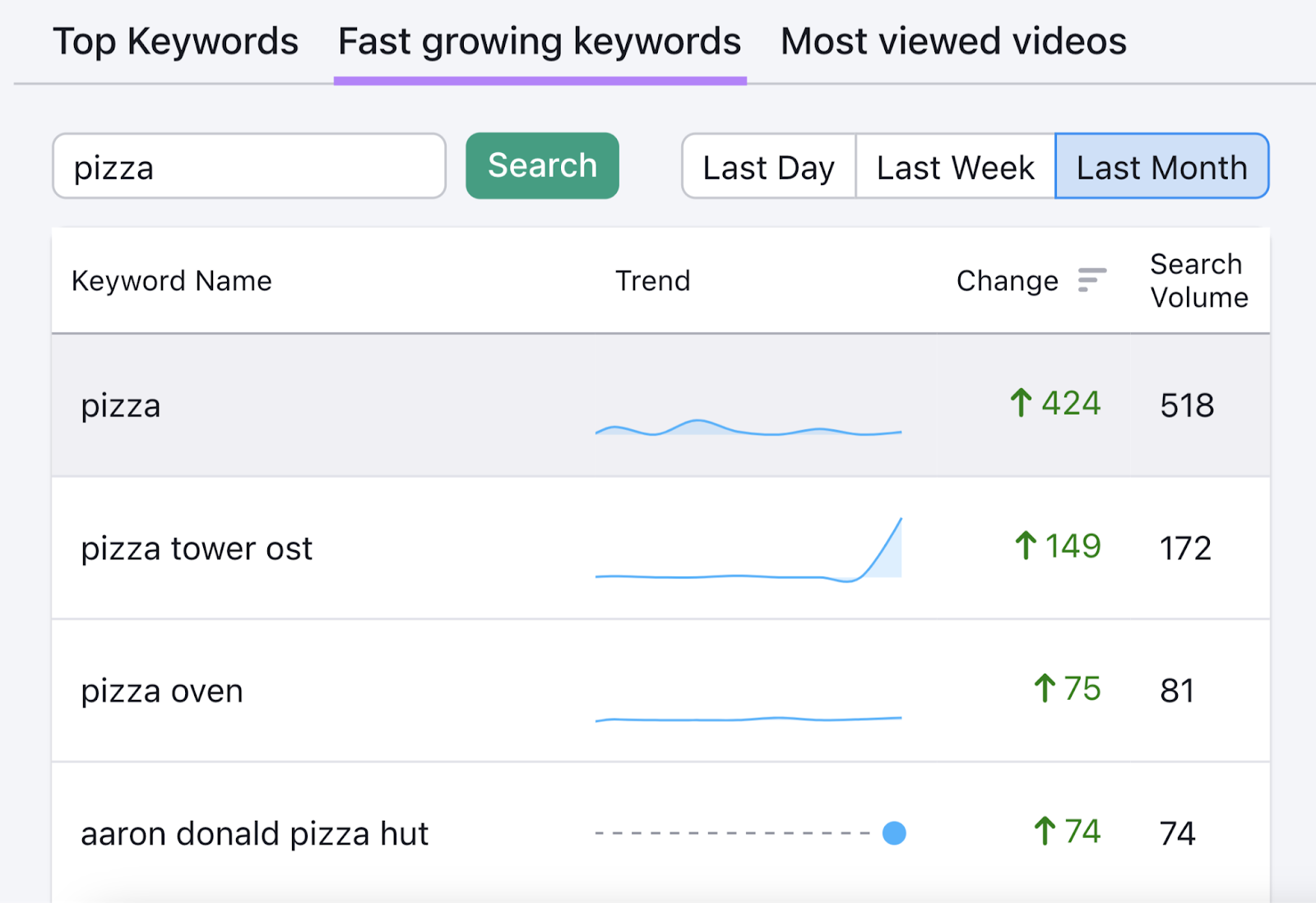
Or switch to “Most viewed videos” to see popular content and feel inspired.
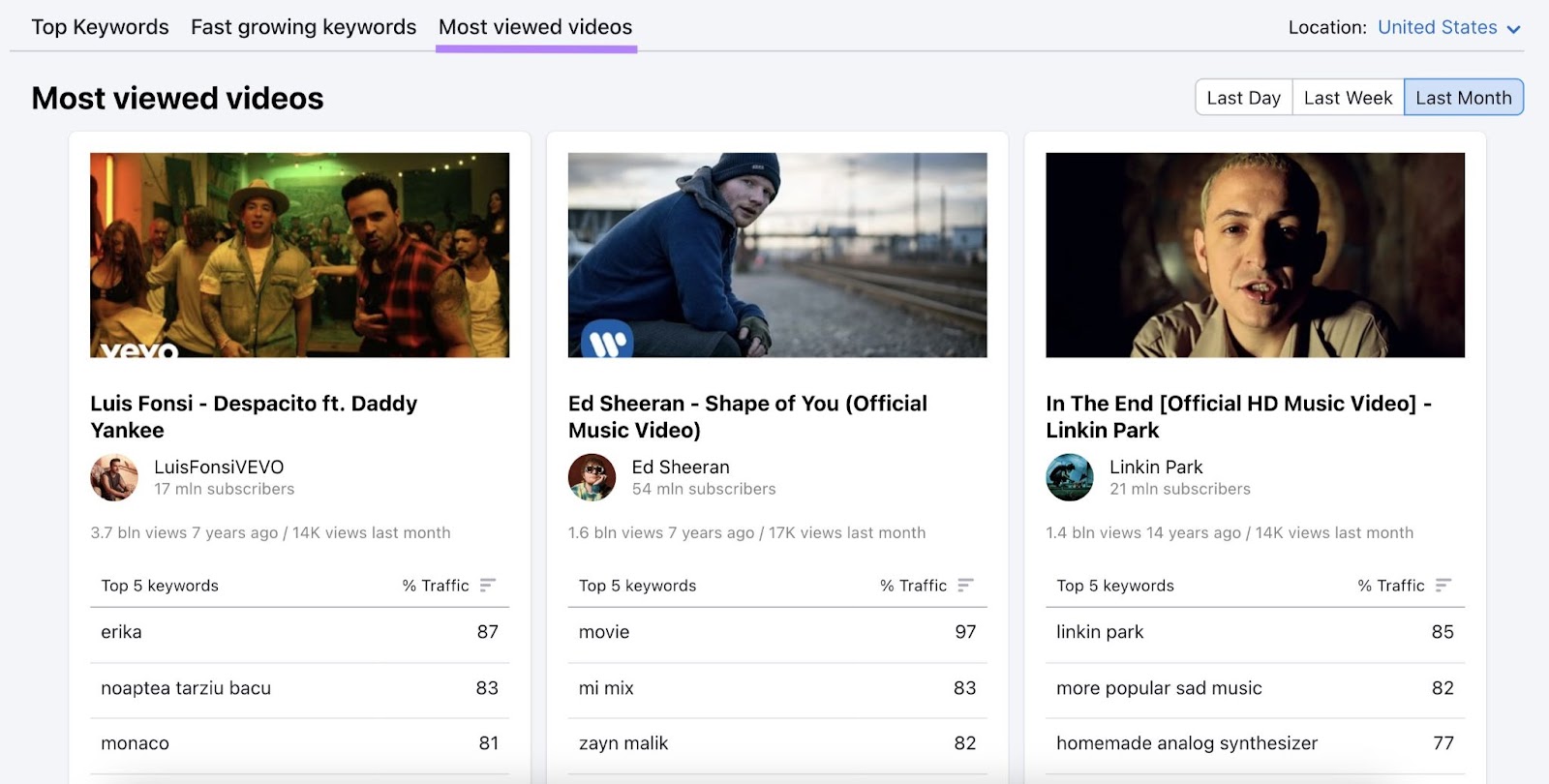
Based on your research, make a list of keywords to target. Use these in your channel description and to optimize other parts of your channel and improve your YouTube SEO.
For example, add your target keywords to video titles, descriptions, tags, and transcripts.
You can find the Keyword Analytics for YouTube app in the Semrush App Center.
Further reading: YouTube Keyword Research: How to Find Popular Search Terms
Create an Engaging Channel Trailer
Channel trailers play automatically when a potential subscriber lands on your channel, which encourages people to engage further with your content.
Create a short video that promotes your YouTube channel and tells people what they can expect from your videos, business, or product.
Here are a few channel trailer best practices:
- Aim for between 30-90 seconds in length: Leave your audience wanting more and entice them to join your channel
- Hook your audience in the first few seconds: For example, tease exciting video content or ask an engaging question
- Appeal to your target audience: Show your expertise, use a personal story, or share your channel’s core goals
- Make sure it’s engaging: For example, use fast cuts, bright colors, and engaging text
- Showcase your best content: Show your audience a taste of what they can expect from your channel
Check out this trailer example from Dropbox, which appears on their channel page. They’ve used the format to show channel visitors what they can expect from the product:

Build Playlists
High-quality, closely related video playlists encourage people to keep watching your content. Which means there are more opportunities for viewers to subscribe.
YouTube playlists also keep your channel organized and less cluttered. This creates a more professional appearance, which helps your brand appear more trustworthy.
Here’s a playlist example from Jamie Oliver, a well-known U.K. chef, who uses a playlist on his channel that collects all his child-friendly videos together:
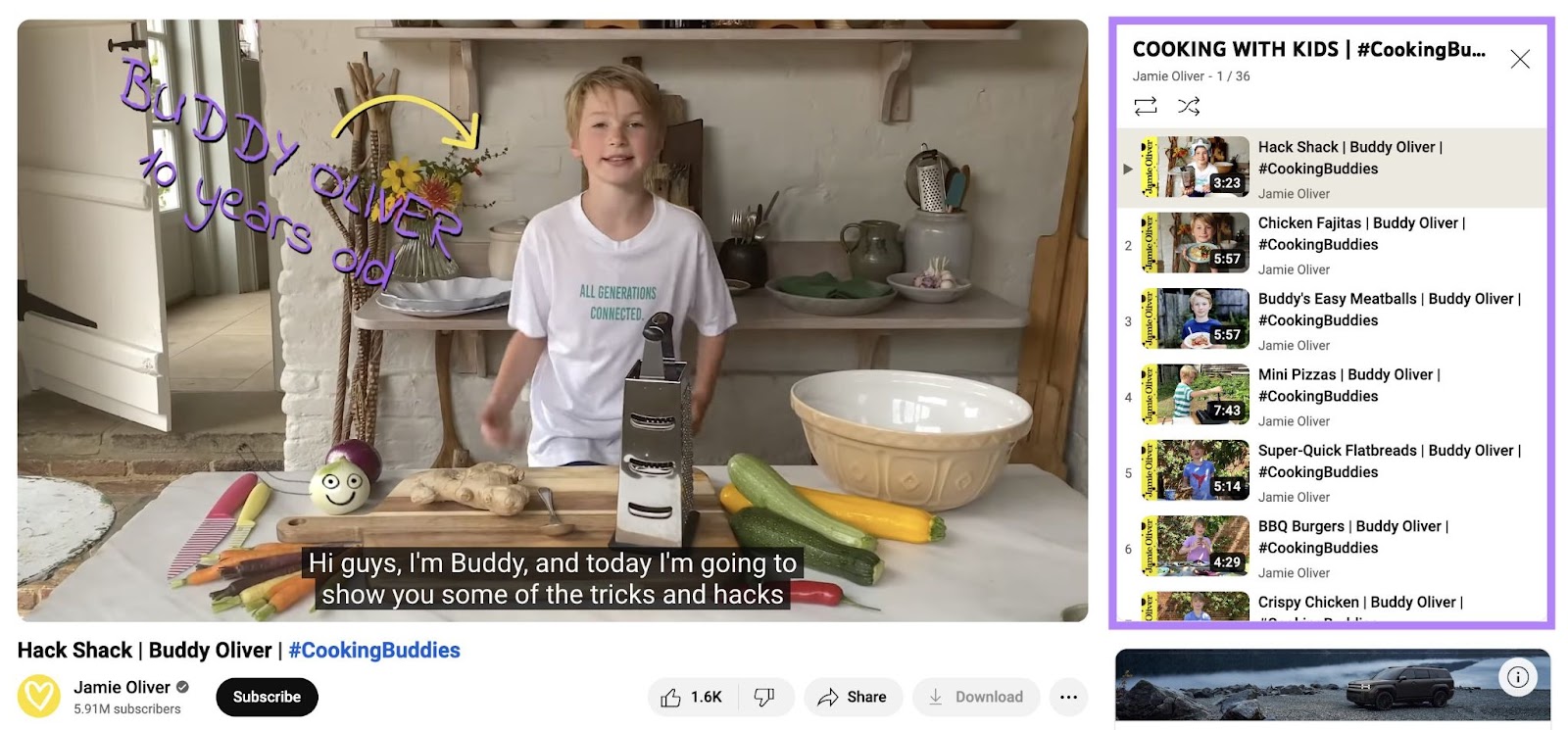
Because playlists are a group of videos that cover the same topic or are related in some other way, they’re helpful if you release videos in a series.
Or want to group similar videos, like podcast episodes, modules of a course, or a narrative around a product launch.
Playlists also keep audiences on your channel longer. This improves watch time, a metric YouTube uses within its algorithms to determine where and when to show videos to viewers on the platform.
2. Upload Consistent, Effective Branding
Maintaining a consistent brand identity helps customers identify, understand, and remember your brand. Which can help grow your YouTube subscriber count.
Upload the following to effectively brand your YouTube channel:
Profile Picture
A YouTube channel profile picture needs to show who you are and what your channel is about.
This helps viewers recognize your brand and build affinity with it.
If the channel is for your business, use a company logo. If you’re a solo creator, you could use an image of your face or product.
Here’s an example from the fashion magazine Vogue:

Banner Image
A banner image is a visual opportunity to show potential subscribers what your channel is about and who runs it.
You can also use this space to show a promotion or latest product launch.
For example, Spotify uses its banner image to promote the popular end-of-year wrapped lists:

Brand Watermark
Brand watermarks help people recognize who made the video they’re watching. Which helps them become familiar with your brand and builds trust.
Plus, a subscribe button appears when you hover your mouse over the watermark. Helping you quickly and easily grow your subscriber count.
Here’s how we include a brand watermark at Semrush:
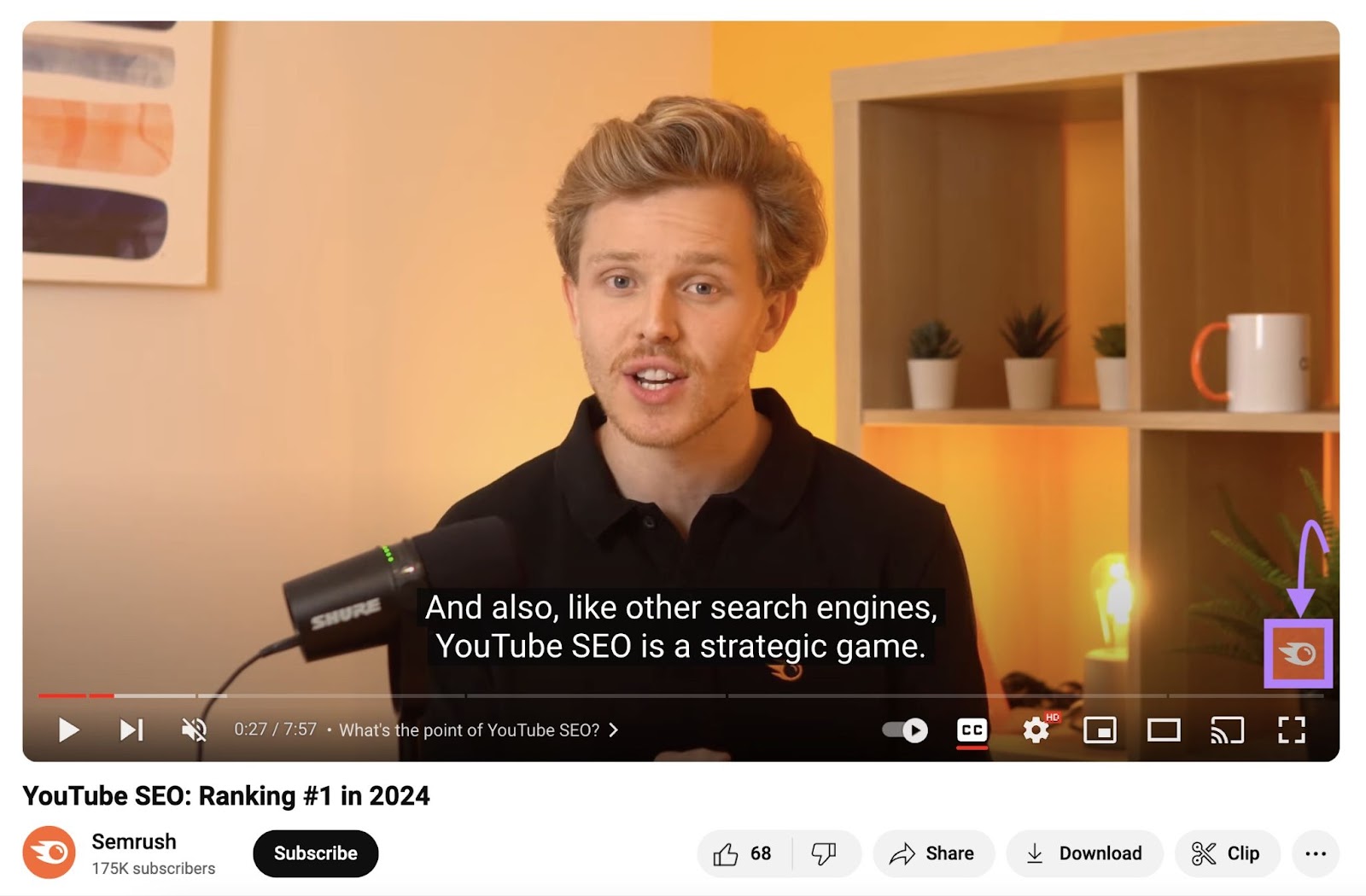
Thumbnails
An engaging thumbnail can lead to more video views. Which helps drive engagement and generate subscribers for your channel.
Create visually appealing thumbnails to capture audience attention in YouTube search results.
Think about creative elements (e.g., text, image, etc) to include that will help you stand out from the crowd.
Here’s an example thumbnail from chef Kenji López-Alt:

Why it works:
- Bright, bold text highlights the video content
- It includes a high-quality image of the finished product
- The image is well-framed and engaging
- It includes the name of the creator to improve brand awareness
Notice how Kenji keeps his branding consistent across all his thumbnails?

This makes his channel more recognizable and it appears more professional. Which helps convert casual browsers into subscribers.
3. Post High-Quality, Engaging Videos
Creating as much content as possible on YouTube might be tempting—the hope being that something sticks, gains popularity, and wins you subscribers.
But this shouldn’t be the approach you take.
Always focus on quality over quantity. You’ll only get more YouTube subscribers if viewers find your content valuable—no matter how much you produce.
Here’s how to create high-quality YouTube videos that grow your subscriber count:
Understand Your Target Audience
Understand your target audience and the topics that interest them to create YouTube videos that meet their needs and interests. This helps you provide value, which creates engagement and generates subscriber growth.
For example, we learn that our pizza cooking channel’s target audience is interested in craft beer, has a modest income, and is mainly located on the West Coast of the United States.
We then tailor our video content to appeal to this group of people to drive more views, engagement, and subscribers.
What’s one of the best ways to understand your target audience?
Look at your direct competitors to get insights into their audience, as it’s likely a similar audience to your own.
Use Semrush’s One2Target tool to examine demographic, socioeconomic, and psychographic data.
Open the tool, enter your competitor’s domain, and click “Analyze.”
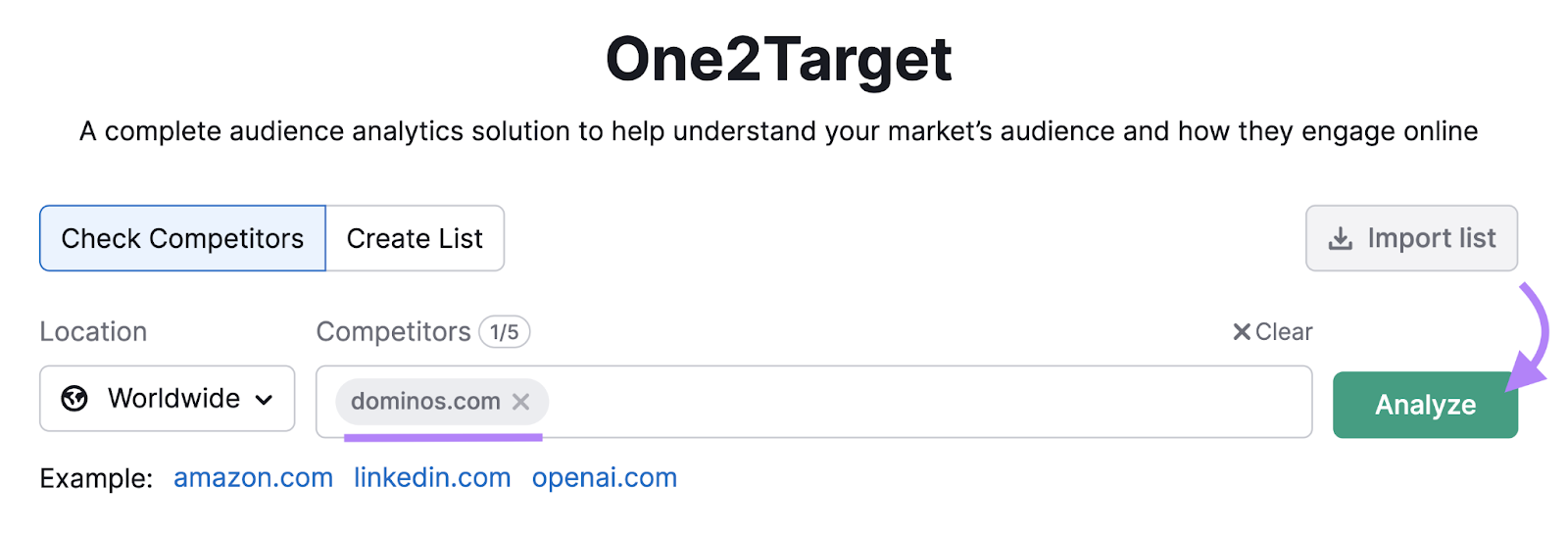
The next screen provides an overview of your competitor’s target audience.
The “Demographics” tab shows a breakdown of their audience by age, ***, and location.
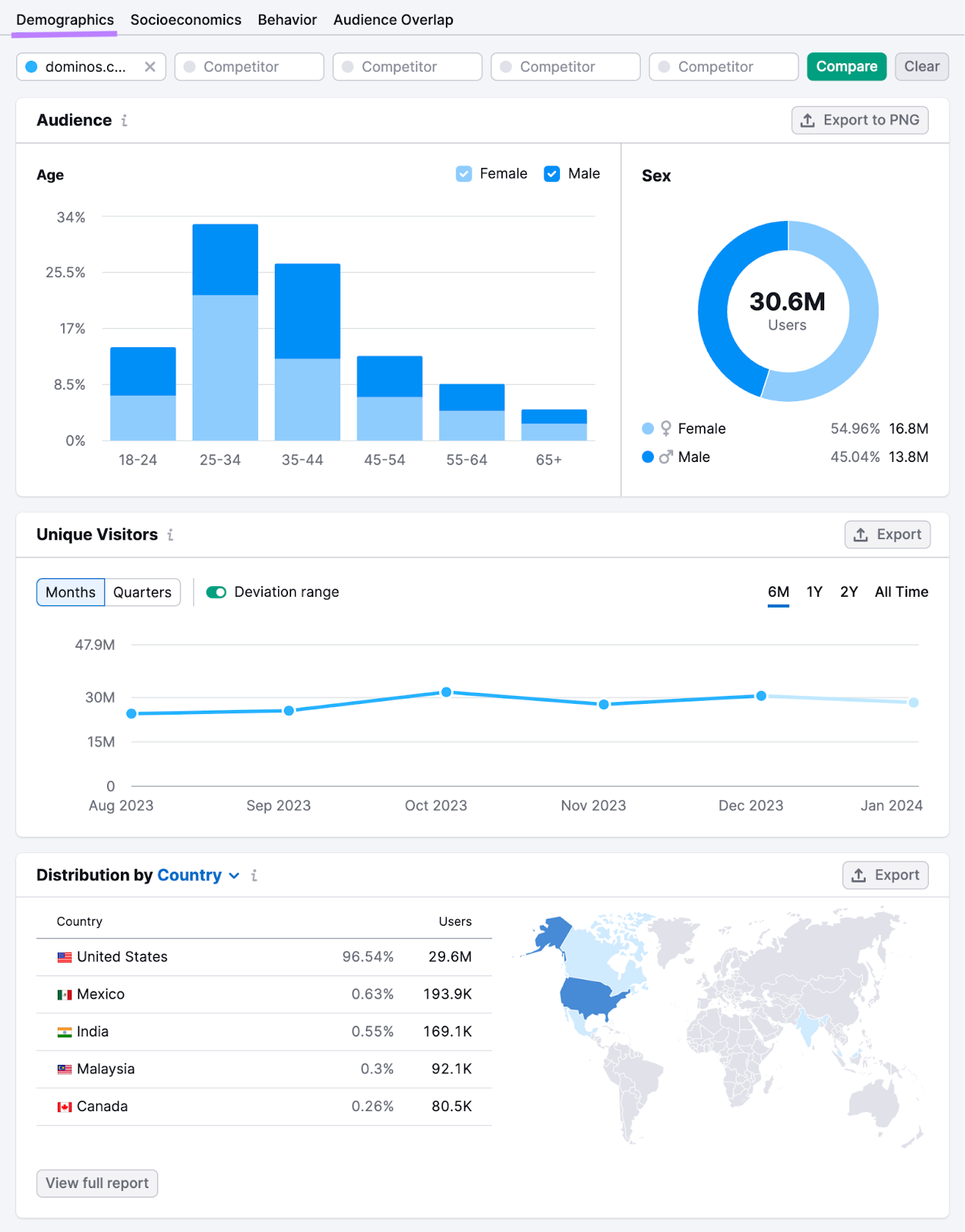
Click the “Socioeconomics” tab to view data about household size, household income, education level, and employment status.
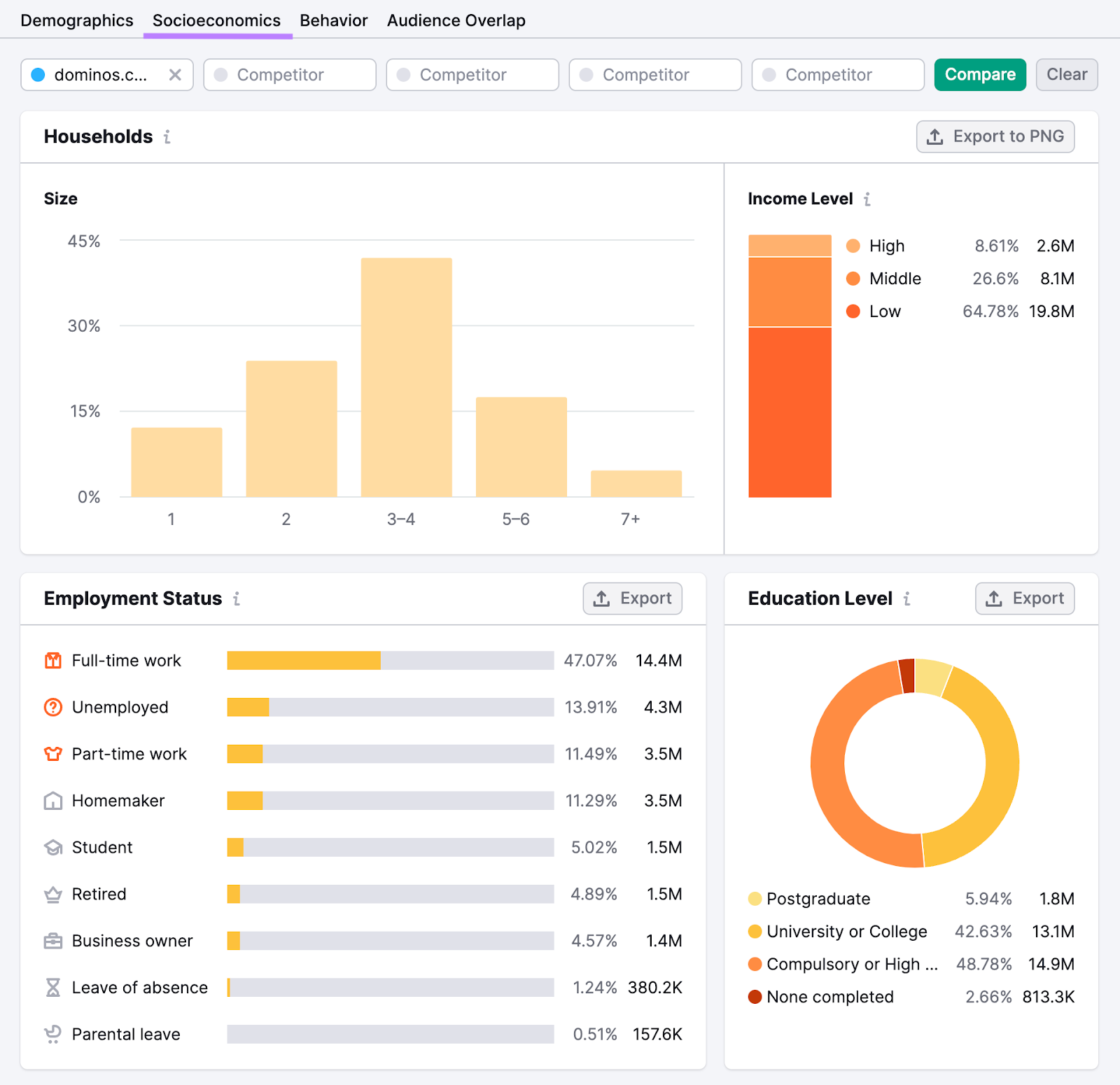
The “Behavior” tab tells you about your competitor’s audience’s interests, device type, and most-used social media platforms.
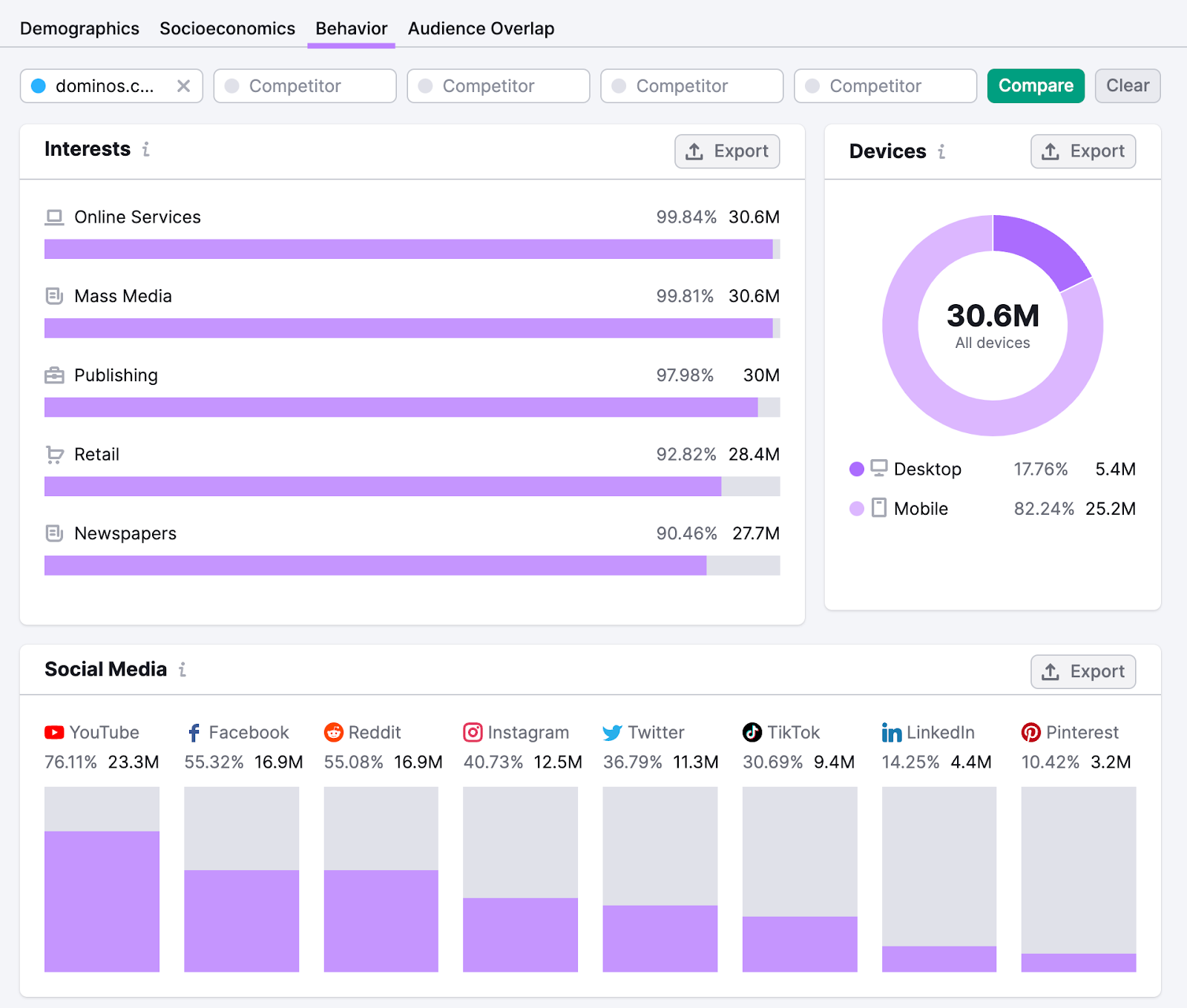
You can use this data to inform your own YouTube content strategy and drive subscriber growth.
Include Calls to Action
Include a call to action encouraging viewers to stay on your channel and engage more with your content.
For example, at the end of your video, share a playlist or video recommendation for them to watch. Or simply ask them to subscribe to your channel for more content.
Also, consider using end screens to grow your subscribers.
These appear at the end of your video and present the viewer with a button to subscribe, along with other CTAs. For example, to watch more videos or visit a website.
Here’s an end screen example from the New York Times Cooking channel that encourages viewers to subscribe:
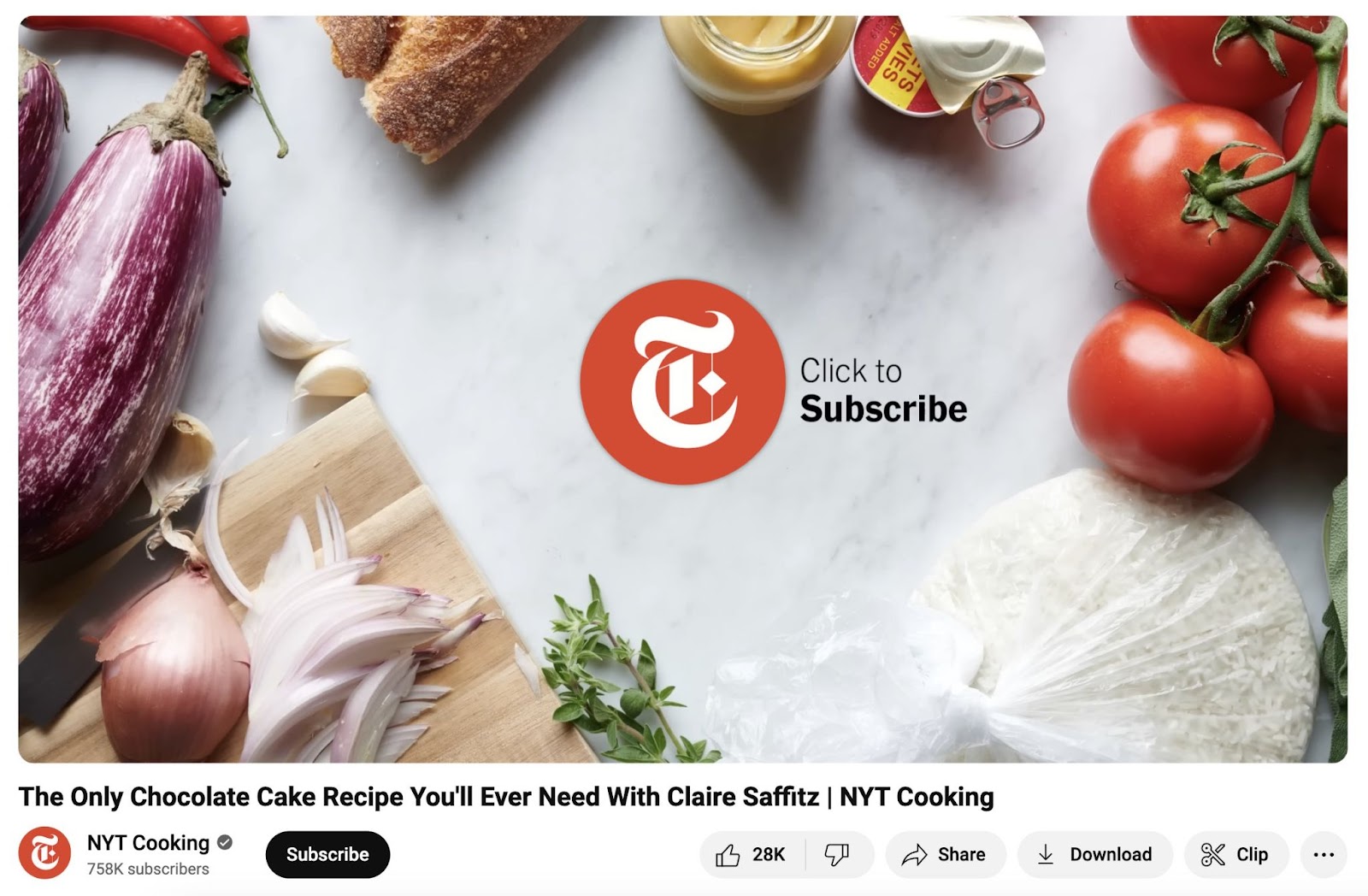
4. Build Engagement with Your Content
Engagement is one of the most important aspects of getting YouTube subscribers.
Engagement is a key part of the YouTube algorithm and, therefore vital to get your videos in front of a wider audience.
One easy way to build engagement is to reply to comments.
If someone has taken the time to comment on your video, send them a reply to help them feel like part of your community.
Engagement also signals to YouTube that your content is valuable. And this can impact how frequently your video is shown to other users, further helping grow your subscriber base.
Here’s an example by social media fitness company Strava:

You can drive subscribers to your YouTube channel from other places—sometimes even off the YouTube platform itself.
Here are a few ways to do this:
Share Videos in Online Communities
You can share relevant video content in online groups or communities to get your channel in front of potential new subscribers. And grow your community, too.
Look at Facebook groups, LinkedIn groups, Reddit, or other digital communities for niche topics that relate to your channel.
For example, if your YouTube channel is about pizza, browse Facebook for pizza-making groups and share your content there. This could get you in front of an audience that might not find you through YouTube’s algorithm.
But don’t spam channels or post excessively. Each contribution is a representation of your brand. So, make sure you share content that’s relevant to the broader conversation and provides value.
Promote Your Channel to Your Existing Audience
You can also leverage your existing audience on other platforms to get more YouTube subscribers.
For example, share videos across other social channels to encourage views and subscribers from audiences connected with you on other platforms.
Or announce your channel and share videos in a newsletter.
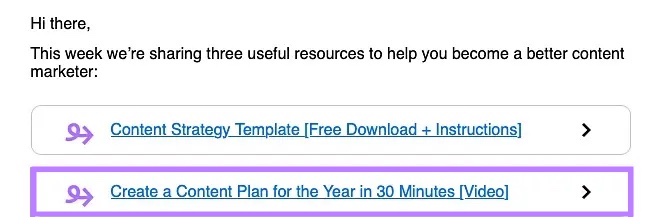
You can also embed your videos in blog posts and email campaigns to encourage views, clicks, and subscribers.
Collaborate with Other YouTubers
Want to get your channel in front of a new audience to drive subscriber growth? Consider collaborating with other YouTubers.
Ensure your collaborator is both compatible with your business and not a competitor before planning your campaign.
For example, it doesn’t make sense for a pizza-themed channel to collaborate with a -grooming channel. Because each audience is too different, the collaboration won’t provide value.
After you’ve sourced a collaborator, appear in each other’s videos. Then, use cards and mentions in the content to direct the viewer from one channel to the other.
This helps introduce your channel to a new audience likely interested in your content. Which can help grow your subscribers.
6. Monitor Key YouTube Metrics
Knowing the types of YouTube videos that drive views, engagement, and subscribers will help you grow your channel even faster.
But when you create and share many different videos, how do you know which ones achieve results and grow your YouTube subscribers?
Look at your analytics.
YouTube has built-in analytics that helps you understand what’s working and what isn’t in your videos.
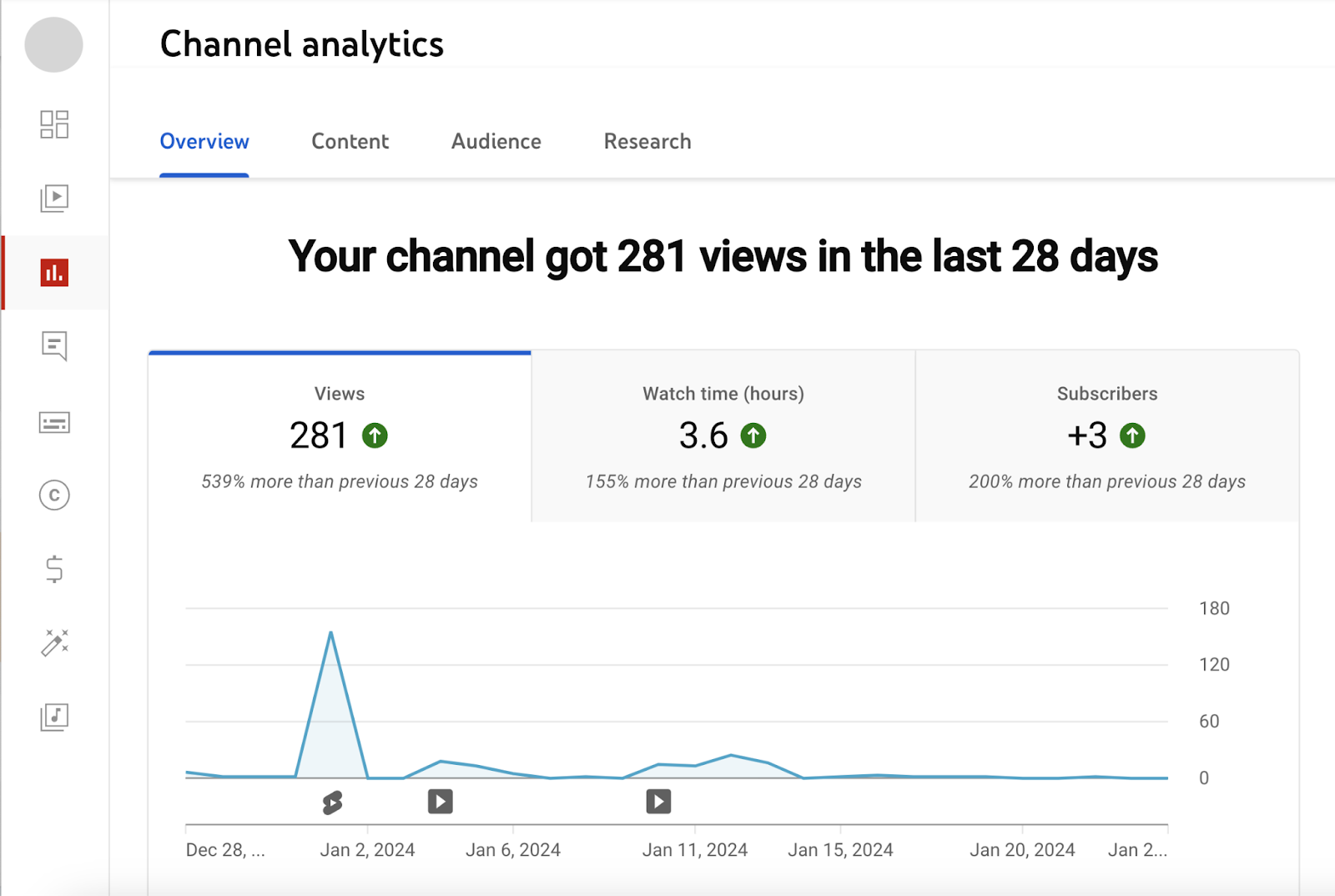
This means you can make content creation decisions backed by data. Which helps grow your channel faster.
There are three principal metrics to keep track of on YouTube:
- Audience retention
- Watch time
- Rankings
Audience Retention
Audience retention indicates when people stop watching your video. This allows you to analyze why this might be the case.
Consider why viewers didn’t watch to the end by asking yourself these questions:
- Did you answer the question they searched for?
- Was the content engaging enough?
- Is the video too long?
- What happened halfway through the video that might make viewers want to click away?
- Did you introduce a CTA and an opportunity to click off the video too soon? (This might not be a bad thing if it leads to conversions.)
Then, use this information to create better videos next time.
To measure audience retention, head to your channel dashboard. Then click “Content.”
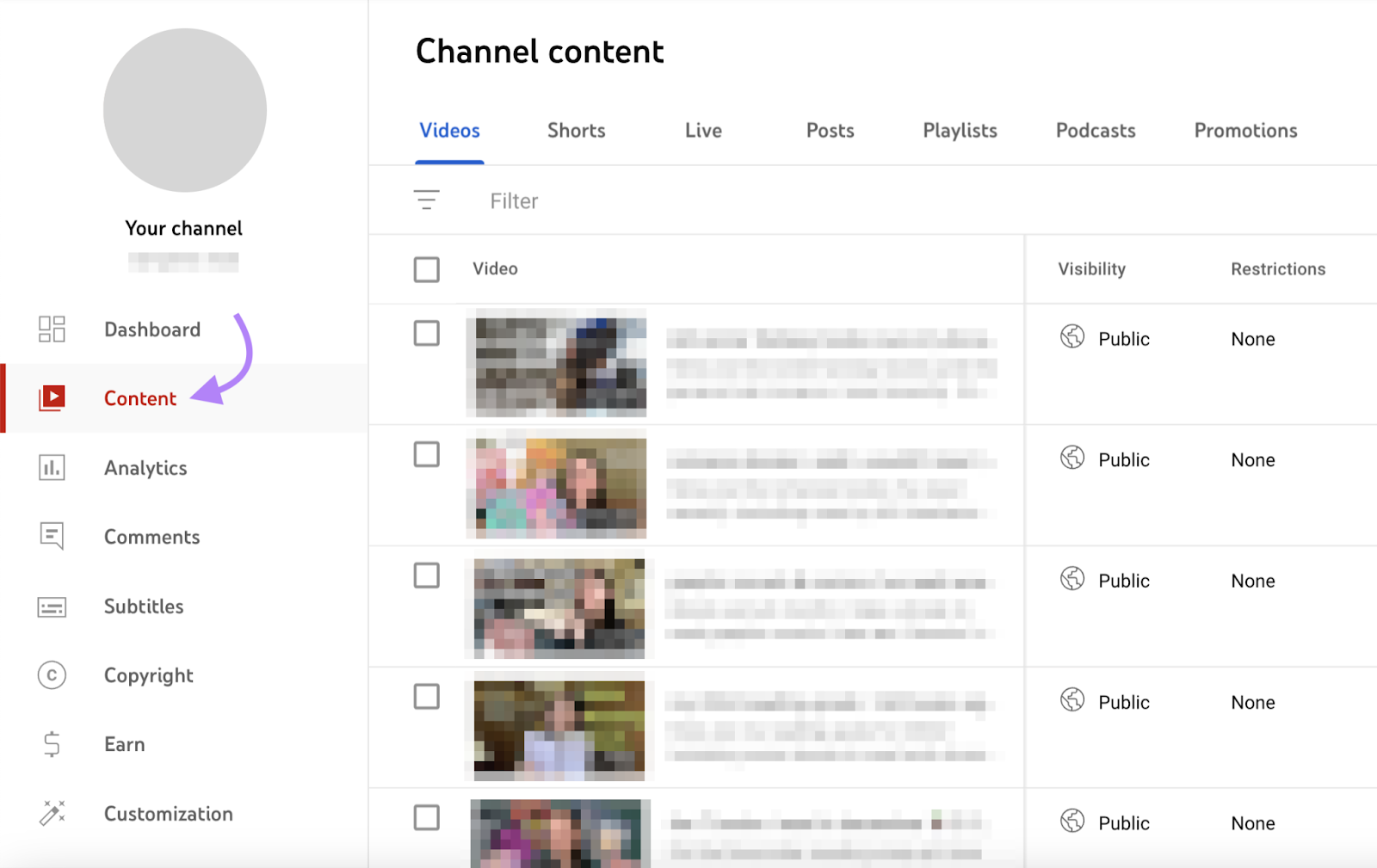
Choose the video that you’d like to review data on. Click “Analytics,” then scroll down to “Key moments for audience retention.”
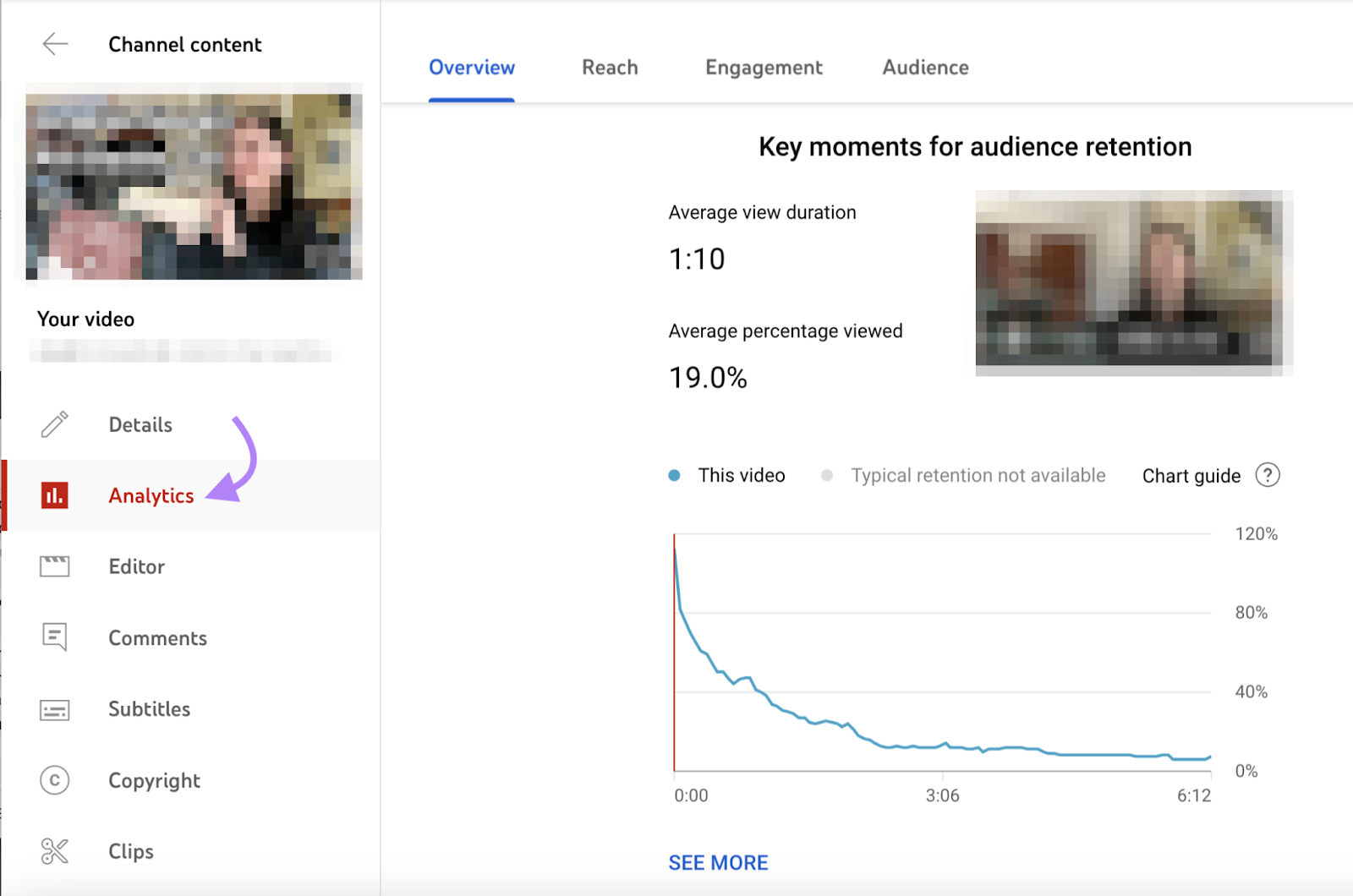
Watch Time
YouTube also uses watch time as a factor within its ranking algorithms. So, you need to measure and look for opportunities to increase this metric to help boost the visibility of your videos.
The watch time metric measures the total time people spend watching your videos on YouTube.
You need 4,000 hours of watch time within the past 12 months to become eligible for the YouTube Partner Program. And to start earning revenue from your channel through ads.
Here are a few ideas to increase your watch time metric:
- Create evergreen content rather than only relying on trending topics
- Use catchy titles and thumbnails
- Stick to a consistent posting schedule
- Build playlists
To measure watch time, select the “Watch time (hours)” tab found in each video’s analytics.

You can also find your channel’s overall watch time in the “Overview” tab.
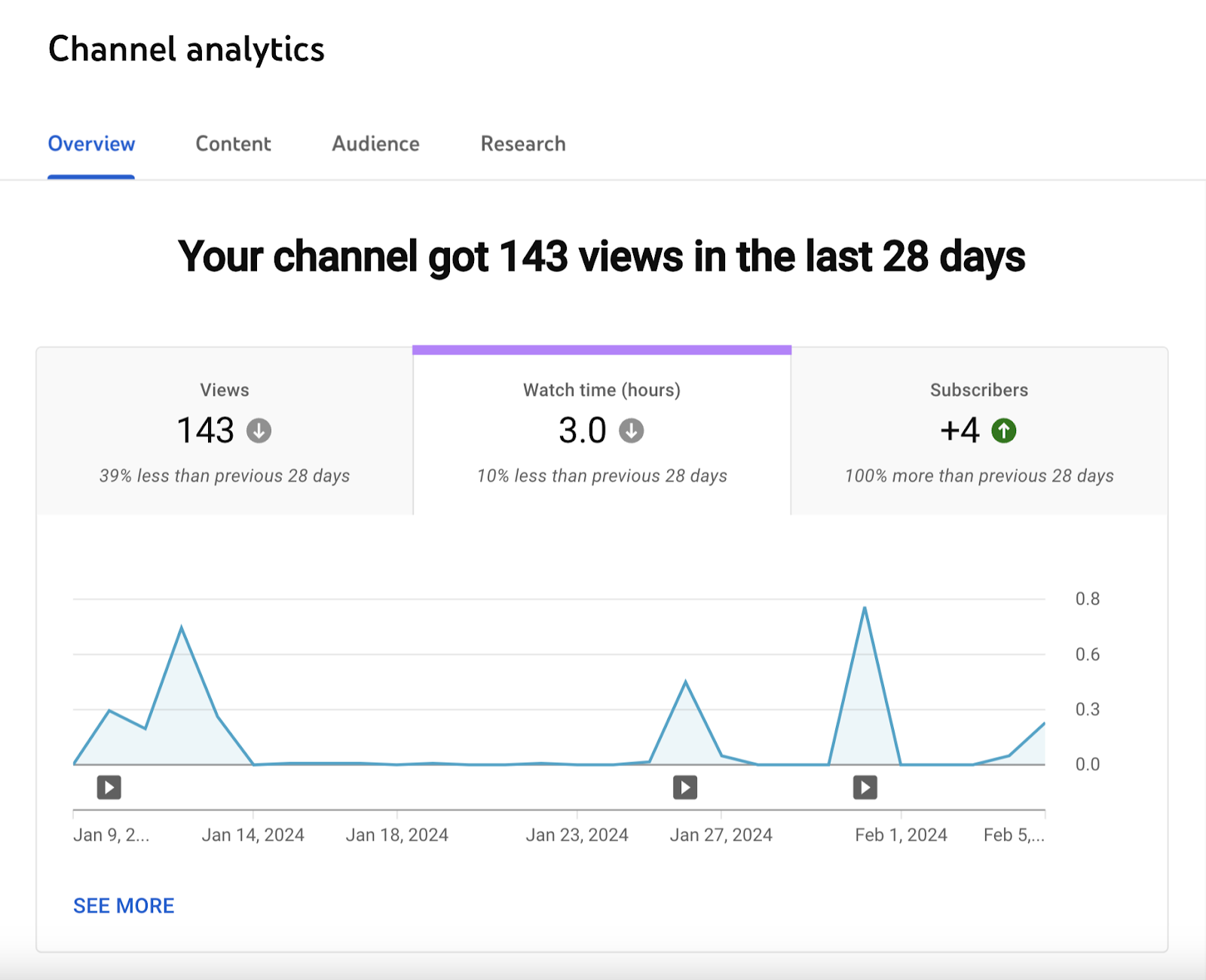
Rankings
Monitoring your rankings in YouTube search results indicates how well your keyword strategy is working. And provide insights on the overall quality of your content.
To see where your videos rank in YouTube search results, use Rank Tracker for YouTube.
Start by importing your keywords. Enter them manually or import them from YouTube Studio or Semrush’s Keyword Manager tool. Then click “Import Keywords.”
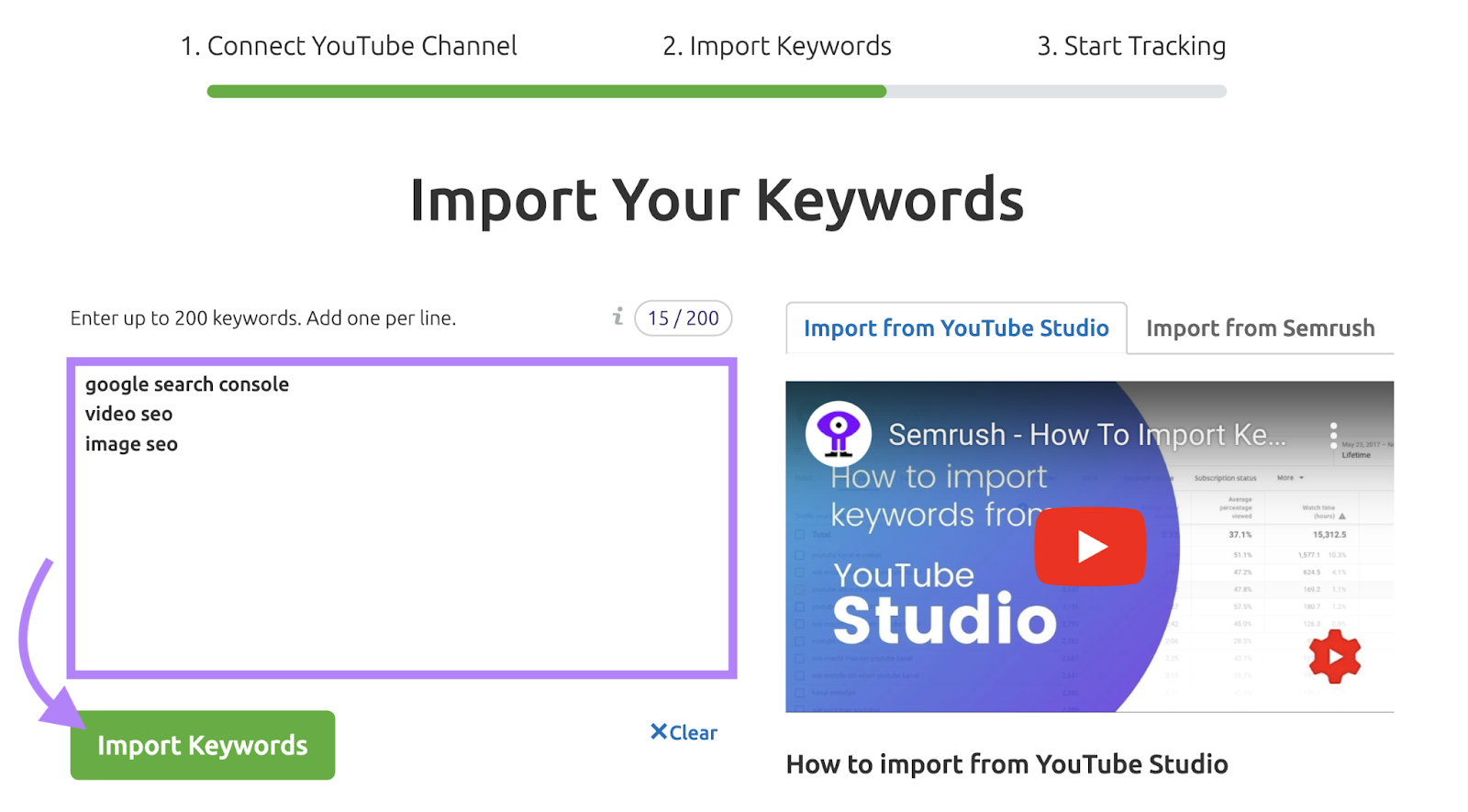
Once you complete the setup, click on the “Overview” tab.
Here, you’ll find the following data for the previous week:
- Your average ranking for all target keywords
- Your keyword ranking distribution (Top 3, Top 10, Top 20, or No Rank)
- How many rankings have increased, decreased, and stayed the same

Click the “Keywords” tab to see your ranking for each target keyword.
Plus:
- How this ranking has changed over the past week
- The title of the ranking video (if you rank in the top 20)
- The average monthly search volume for the target keyword
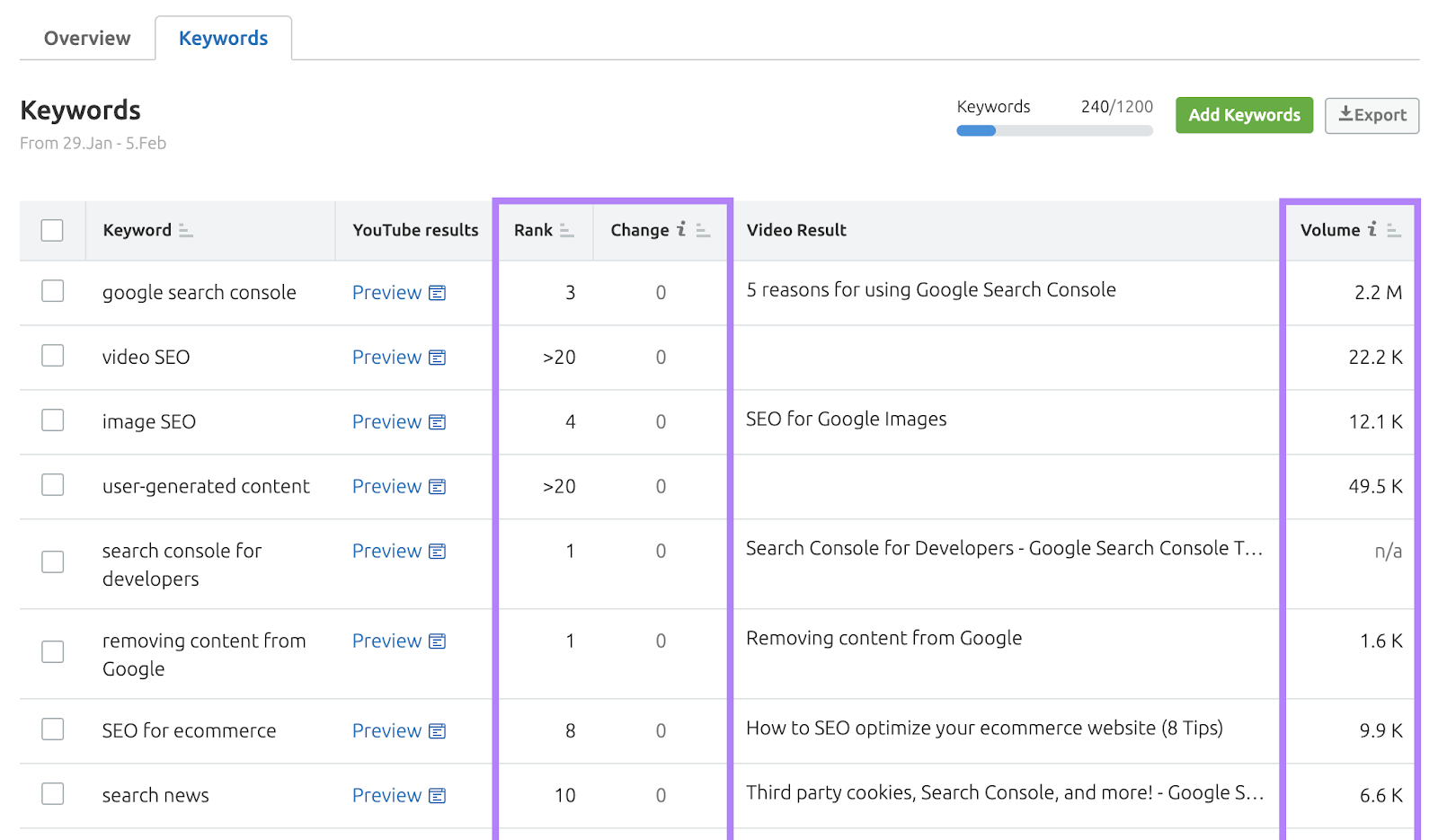
To analyze the main competition for any keyword, click “Preview” in the “YouTube results” column.
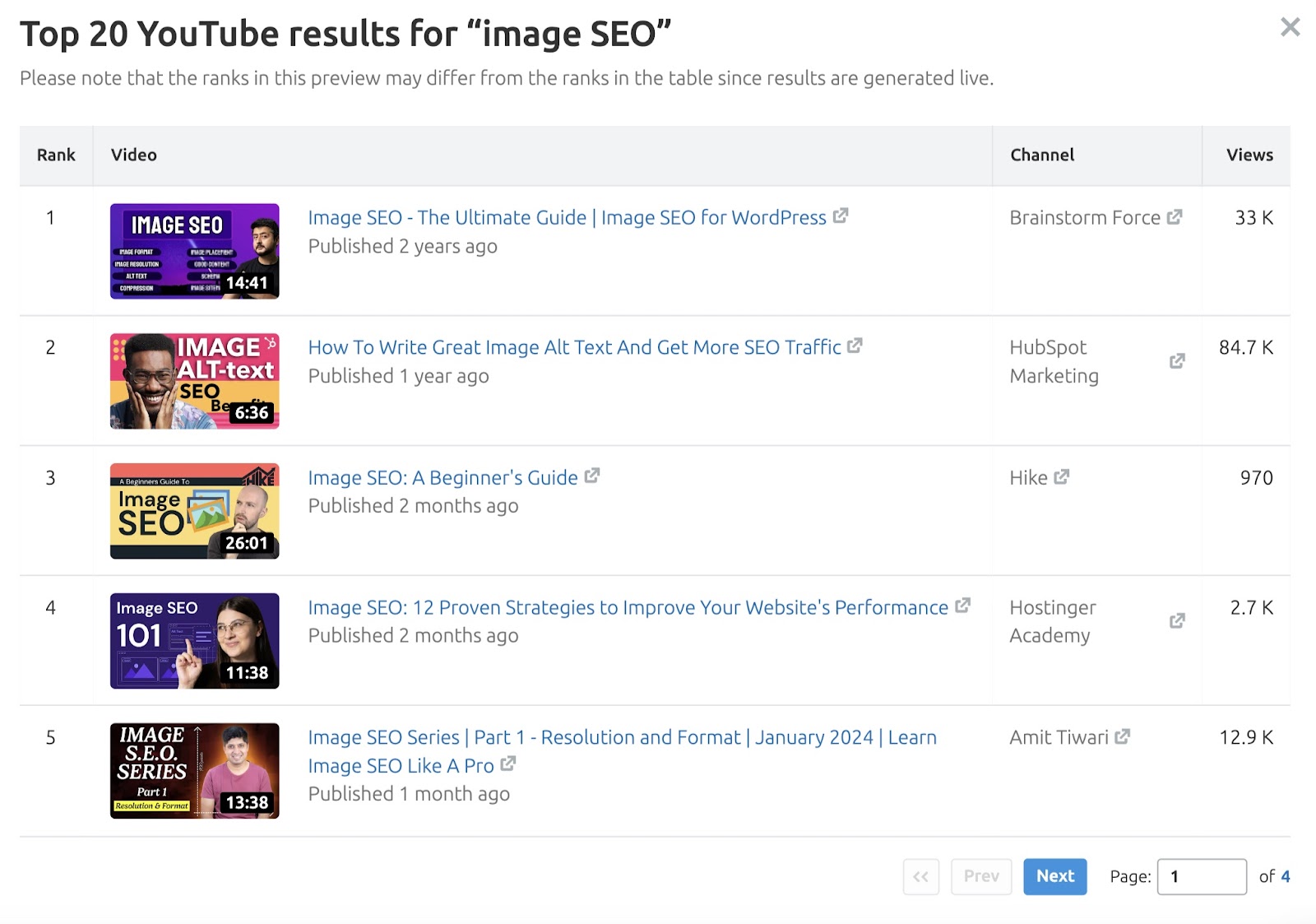
Here you’ll see the ranking, thumbnail, duration, title, and publish **** for the top 20 videos.
And which channels published them and how many views they have.
You can find the Rank Tracker for YouTube in the Semrush App Center.
Frequently Asked Questions About Getting YouTube Subscribers
How Many Subscribers Do You Need to Get Paid on YouTube?
To monetize a YouTube channel with ads, you need 1,000 subscribers and either 4,000 public watch hours on long-form videos in the past 12 months or 10 million public YouTube Shorts views in the past 90 days.
How Do You Get Monetized on YouTube Without 1,000 Subscribers?
To monetize YouTube without 1,000 subscribers, you still need at least 500 subscribers. This way, you can run channel memberships, promote your own products with YouTube Shopping, and access various other features.
But to unlock the ability to earn money from ads and YouTube Premium, you need 1,000 subscribers.
How Do You See Your YouTube Subscribers?
To check the number of subscribers your YouTube channel has, follow these steps:
Log in to YouTube Studio and click “Analytics.”
Then, on the “Overview” tab, click “Subscribers.”
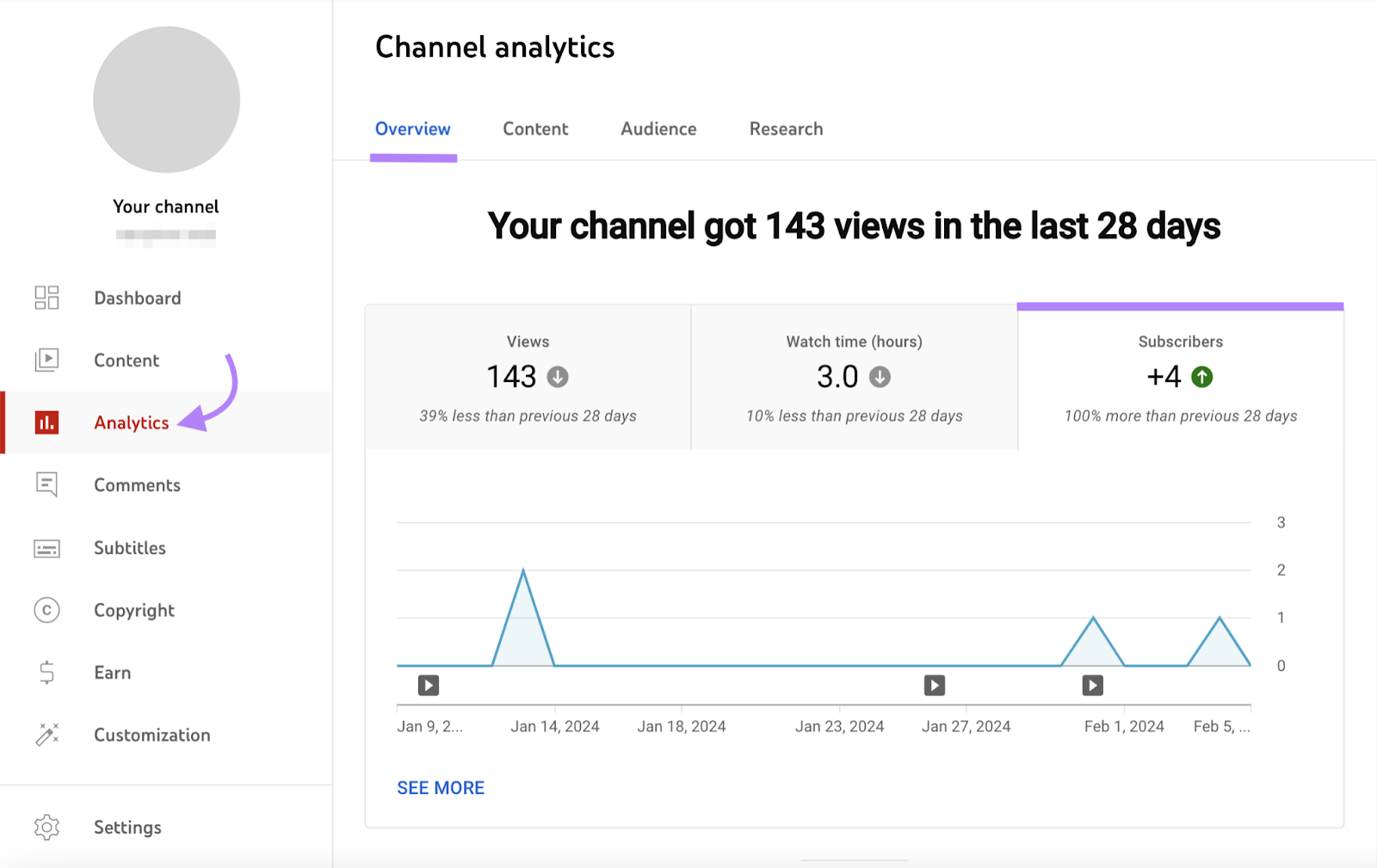
On the “Subscribers” tab, you can see the number of subscribers and the growth of your subscribers.
How Do I Become a YouTube Partner?
Any channel owner can join the YouTube Partner Program—as long as they meet the following criteria, as outlined by Google:
- Follow YouTube channel monetization policies
- Live in a country/region where the YouTube Partner Program is available
- Have no active Community Guidelines strikes on your channel
- Ensure 2-Step Verification is turned on for your Google Account
- Have advanced features access on YouTube
- Have one active AdSense account that you’ll link to your channel (or be ready to set one up)
Then, once you have 1,000 subscribers and 4,000 hours of watch time (or 10 million Shorts views), your channel can become eligible for the YouTube Partner Program with either Shorts or long-form videos.
Can I Buy YouTube Subscribers?
We don’t recommend buying YouTube subscribers.
It’s a risky strategy that could get your account suspended or banned. Because buying subscribers goes against YouTube’s terms of service.
How to Get More YouTube Subscribers with Semrush
Ready to make strategic decisions about the future of your YouTube channel?
Use the Semrush suite of tools, including Keyword Analytics for YouTube and Rank Tracker for YouTube, to create video content that grows your audience and gets you more subscribers.
Source link : Semrush.com
